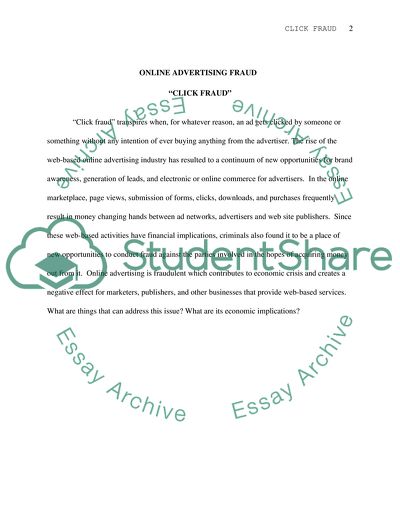Cite this document
(Online Advertising Fraud Coursework Example | Topics and Well Written Essays - 2000 words, n.d.)
Online Advertising Fraud Coursework Example | Topics and Well Written Essays - 2000 words. https://studentshare.org/information-technology/1720392-online-advertising-fraud-click-fraud
Online Advertising Fraud Coursework Example | Topics and Well Written Essays - 2000 words. https://studentshare.org/information-technology/1720392-online-advertising-fraud-click-fraud
(Online Advertising Fraud Coursework Example | Topics and Well Written Essays - 2000 Words)
Online Advertising Fraud Coursework Example | Topics and Well Written Essays - 2000 Words. https://studentshare.org/information-technology/1720392-online-advertising-fraud-click-fraud.
Online Advertising Fraud Coursework Example | Topics and Well Written Essays - 2000 Words. https://studentshare.org/information-technology/1720392-online-advertising-fraud-click-fraud.
“Online Advertising Fraud Coursework Example | Topics and Well Written Essays - 2000 Words”. https://studentshare.org/information-technology/1720392-online-advertising-fraud-click-fraud.


